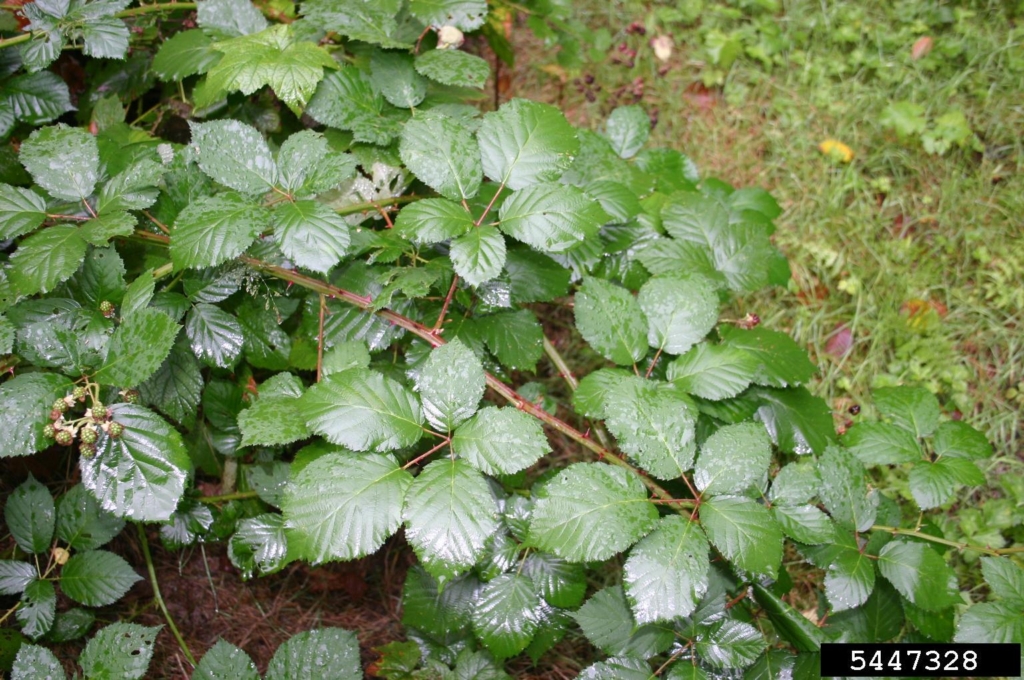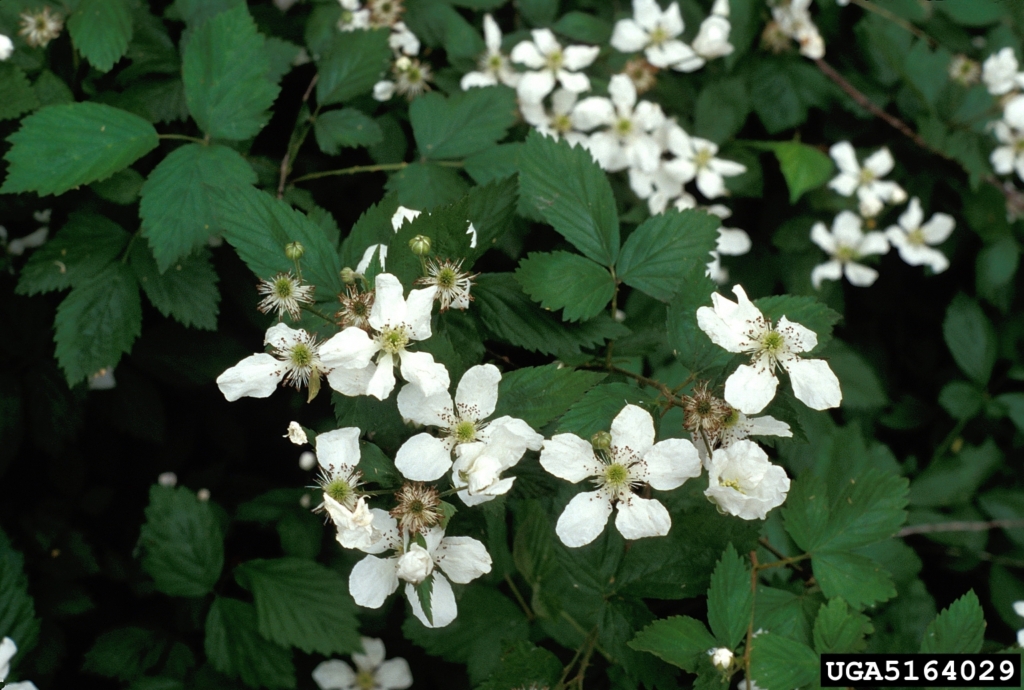Himalayan Blackberry
Rubus bifrons
Plant Description
The compound leaves of Himalayan blackberry are large, round to oblong, and toothed. The leaves typically come in sets of three (on trailing canes) or five (on main stems). Evergreen leaves, large thorns on stems; leaves in groups of 5; small white to pink flowers.
Plant Details
| Life Forms | |
|---|---|
| Habitats | |
| ODA Listing | |
| Soil and Moisture Conditions | |
| Suggested Actions | |
| Shade Preference | |
| Mature Height | 10' |
| Distribution | Non-native blackberries have become a significant problem on the west side of the Cascades where they are much more aggressive than on the east side. |
| Control | When plants are young, hand pull the stem close to the ground and uproot the root ball. This method is most effective in loose soils or after a rain. For small infestations, dig up root crowns and grub roots. Be sure to monitor the work area for large root fragments which, when left in the ground, can re-sprout. Mowing, including the use of riding mowers and tractor-mounted mowers, can be very effective to control blackberries but may also harm desirable plants. Cut vines several times a year over several years to exhaust the energy reserves. Do not mow where soils are highly susceptible to compaction or erosion, or where soils are very wet. Note: Birds may nest in blackberry patches from early spring through July. Mow large berry thickets during dry periods in the fall or winter to prevent damage to nesting birds. Once the large canes have been cut, follow up by mowing the younger plants in the summer. Plant trees to control blackberry over the long run. Established trees will shade out blackberry and improve habitat for other native species and wildlife. |
| Reproduction and Spread | Invasive blackberry reproduces vegetatively by root and by seeds which are dispersed by birds and other animals eating the fruit.The plants begin flowering in spring with fruit ripening in midsummer to early August. Daughter plants can form where canes touch the ground and begin rooting.Seeds can remain viable in the soil for several years. |
| Introduced | of European origin |
| Look Alikes | native blackberry, Pennsylvania and Elmlead blackberry |
| Impact | Will spread and take over pastures, riparian areas, open areas, and other areas of high disturbance. Crowds out native plants. hey out-compete native understory vegetation and prevent the establishment of desirable native shade-intolerant trees such as Douglas-fir. Blackberry can limit the movement of large animals by forming large, impenetrable thickets. |
| More Info |
© Marion Soil and Water Conservation District. All Rights Reserved.


